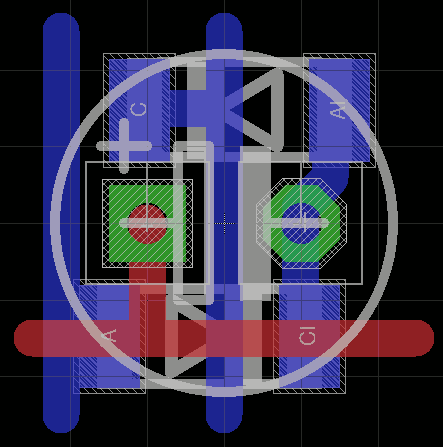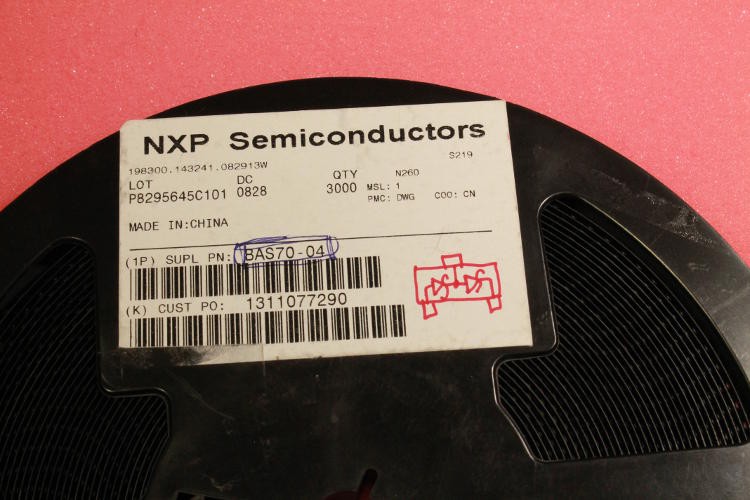Let's start with the Program Memory. Or more exactly : the ROM.
It's made of a collection of diodes, making a diode matrix to store 24-bits words.
There is also the configurable ROM, which is made of boards with DIP switches.
For the ROM I can use my stock of leadless 1N4148 (SOD) and solder one diode where one bit must pass. But developing the software that must be soldered requires a development board, hence the DIP swiches, which is my focus now : 256 words require 768 DIPS switches (ok) and 6144 diodes.
Wouldn't it be nice if they were easier to solder ? The SOD diodes roll before soldering. OTOH I know there are dual-diodes in SOT23 : half the number of parts, 2/3 the number of pins to solder.
I use dual-diodes in the PWM generator of #DYPLED but I have the wrong kind, with no common anode or cathode. So I went shopping. And I found ... something else !

Further down the datasheet (well, the competitor's), I find that it's a "low leakage" diode. Low leakage, two diodes...
Yes, the DRAM cell needs that ! The SOD version was such a pain to route:

(see the log Dual Diodes (the hard way))
For now I can test a prototype array with the BAS70-04 (NXP) (I can borrow the reel from the #DYPLED project which doesn't need all of it) and I can compare the leakage, the driving methods, the routing...
Anyway I have vague estimates of the leakage currents, but no clear understanding of all the phenomenons at play in this kind of array. Fortunately the capacitors have a reasonably high capacitance and high voltage so maybe I can spy on the voltages with a 10x probe.
BTW a 512-words DRAM system requires 9216 dual-diodes... that's a lot and I plan on building 40 arrays of 16×16 bits (10240 diodes).
OK I made a little mistake : the BAS70 are very small signal Schottky diodes.
http://assets.nexperia.com/documents/data-sheet/BAS70_1PS7XSB70_SER.pdf
Schottky is usually more leaky than traditional 1N4148 (though it is relative to the voltage ratings). Their repetitive pulse ratings are also far from what the system will make them endure (12V differentials during contacts).
But it can be indicative of a "worst case" so why not try and measure the data retention time ?
PS
Happy ending : I have found some BAW56, with enough peak current rating, in SOT23, for the PROM array, but I must wait for their delivery... and only enough for 128 instruction.
 Yann Guidon / YGDES
Yann Guidon / YGDES
Discussions
Become a Hackaday.io Member
Create an account to leave a comment. Already have an account? Log In.